How to Save the Earth in 6 Books
The earth is a beautiful place. Amazing wildlife, picturesque views, natural ability to sustain all kinds of life. It’s important to take care of the home we have, and to make sure it is beautiful for the next generation. As a few of the following book reviews show us, protecting the earth can even be good for business. These six books on climate change are all reviewed in our March/April issue.
Movement Matters
Essays on Movement Science, Movement Ecology, and the Nature of Movement
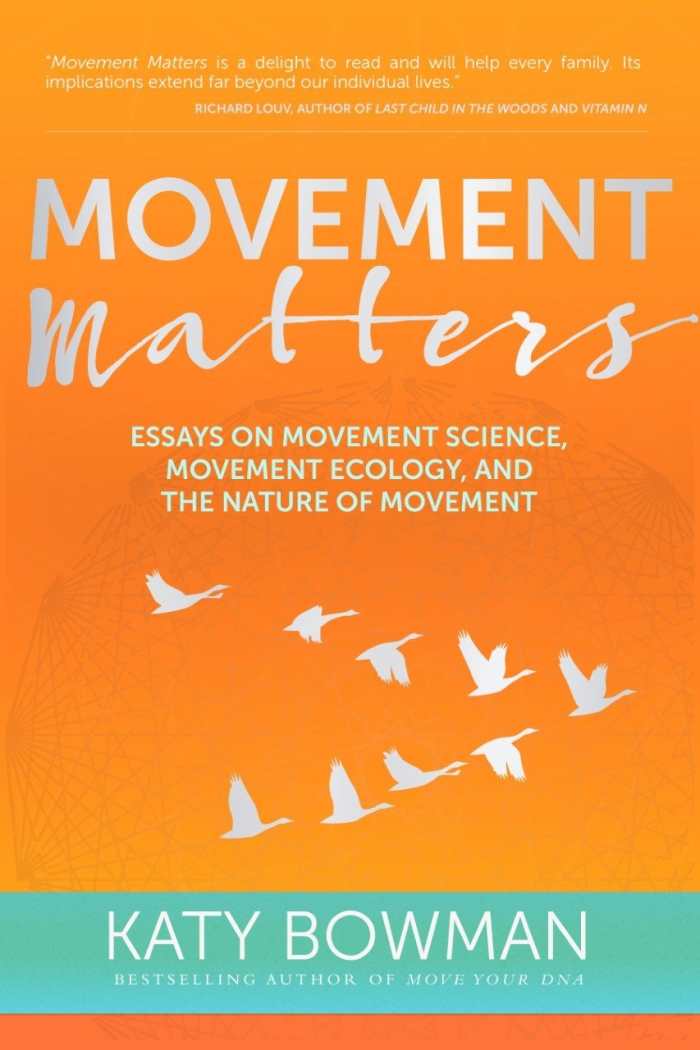
Katy Bowman
Propriometrics Press
Softcover $17.95 (224pp)
978-1-943370-03-0
Buy: Local Bookstore (Bookshop), Amazon
Tying together ecological sustainability and modern lifestyles, this book focuses on the science of moving in healthy ways as a means of healing both the earth and the individual. Its heavy emphasis on healthy living generates a necessary bridge between personal well-being and the well-being of the whole environment, and is yet another strong voice in the general call for more active, mindful lifestyle choices.
Bowman, a biomechanist, does a fine job communicating the hidden significance of everyday acts, such as walking, sitting, and buying prepared food, in digestible sound bites. This is no dense academic treatise; it is written specifically to appeal to the average person, actively acknowledging commonly asked questions about activity and exercise. As in the case of walking overland versus walking on a treadmill, the author consistently calls for an entire way of life that incorporates movement and activity with being outdoors and interacting with nature. Exercise enthusiasts may find it especially interesting, but the advice seems tailored for the person whose gym membership and office job fail to inspire. It has potential broad reach and should not be ignored when building an alternate health collection.
The book is organized as a series of essays and grouped thematically. The three appendices contain useful information for anyone who is inspired by the content. Two of these three are concerned specifically with child rearing. Parenthood is a consistent theme throughout the book, though secondary to movement and ecology. The author introduces several examples that are anecdotal, based on her own children. Citations appear at the conclusion of each essay.
Movement Matters is a continuation in a popular trend toward a holistic approach to health and ecology. Ideal for nutritionists, fitness experts, and anyone seeking an all-around healthier lifestyle.
ANNA CALL (March 2, 2017)
Making Local Food Work
The Challenges and Opportunities of Today’s Small Farmers
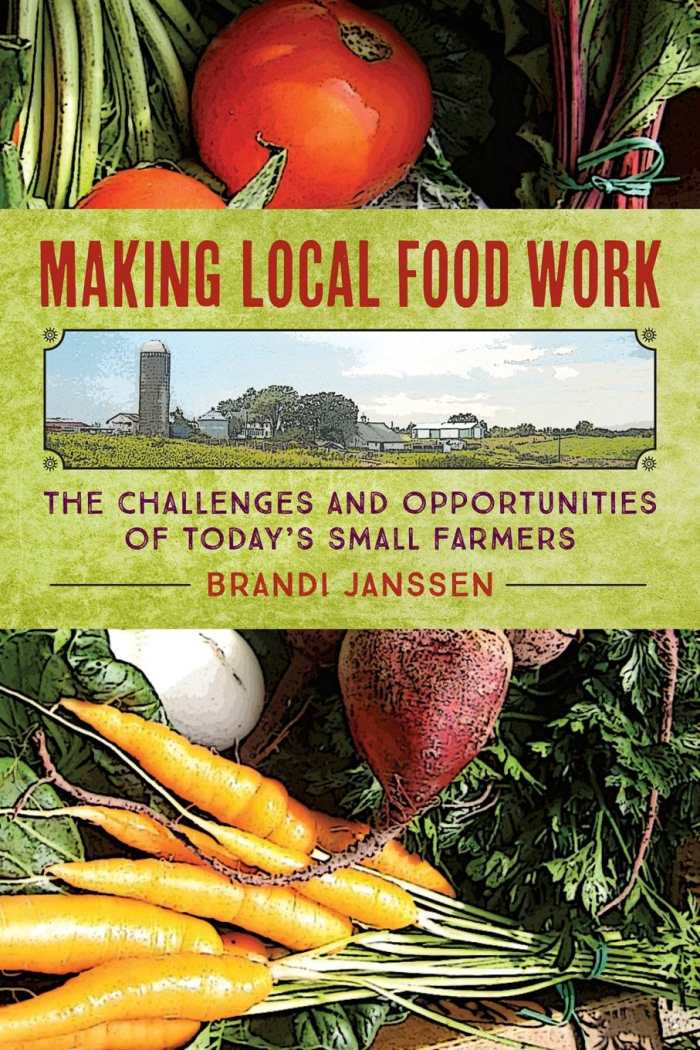
Brandi Janssen
University of Iowa Press
Softcover $27.50 (230pp)
978-1-60938-492-0
Buy: Local Bookstore (Bookshop), Amazon
In the age of the locavore, Janssen’s text examines the movement from the perspective of the farmer, combining research with incisive, yet practical, analysis.
The book begins with a straightforward explanation of the author’s background and methods. By mentioning that she is an anthropologist, she indicates the tack of the book early: this work does not purport to show how to “make local food work” in a technical or agricultural sense. It does not discuss the details of crop rotation, irrigation, or any of the hundreds of other individual pieces of know-how that go into farming. However, it provides something that may prove more valuable to growers who already know what they’re doing: an overview of the methods that are and are not working for local food growers, from building CSA membership to getting local food into school lunches.
Much of the content is based on the author’s direct research with farms and farmers. This includes conversations, many of which appear in the book verbatim, and periods of time that the author spends absorbing the local farm experience. However, this is, in its own right, an academically researched work, relying as much on statistics and facts as on the experiences of the farmers with whom Janssen interacted in the course of its creation. The combination is particularly powerful in conjunction with the author’s highly readable style.
Janssen is overtly in favor of local and organic farming, to the extent that she occasionally criticizes current large-scale farming practices. This may generate some controversy, but the research is sound enough, and the book’s tone even enough, that more traditional farmers may also find material for meaningful discussion here rather than fuel for argumentation. No farmer with locavore aspirations can afford to miss this stimulating piece of work.
ANNA CALL (March 2, 2017)
Global Sustainability
21 Leading CEOs Show How to Do Well by Doing Good
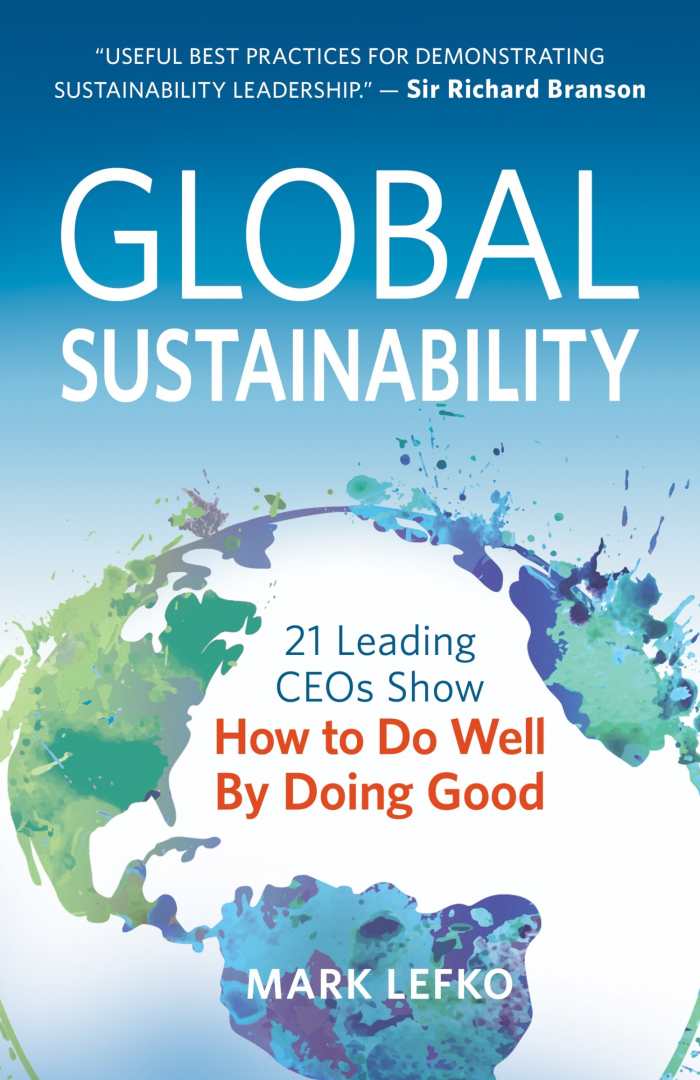
Mark Lefko
Morgan James Publishing
Softcover $17.95 (172pp)
978-1-68350-176-3
Buy: Local Bookstore (Bookshop), Amazon
Clear and concise, Global Sustainability, with examples drawn from the corporate world, functions as a manual for large-scale business sustainability.
Though it does deal with ecological sustainability, this book tackles sustainability in every sense, encompassing community economics, employee ownership, and public image. The author has done a fine job lining up high-profile business types, including Richard Branson of Virgin Airlines and Walter Robb of Whole Foods, to deliver advice for the aspiring sustainable business. The message is that sustainable business is not only possible, but preferable and profitable.
The approach is practical to the extreme, even to the point of nearly ignoring the usual ethically and morally high-minded reasons for engaging in sustainability. This turns out to be its most significant strength, and in itself may represent an innovation in the climate-change and social-responsibility discussions as far as the business world is concerned.
The author presents many solid old arguments in fresh, convincing ways. Several hinge on aspects of the modern world that would not have made sense twenty years ago, such as the existence of the Internet. Additionally, the book avoids politics altogether. It covers solely the business world and proposes that business is powerful enough—and self-interested enough—to change the world for its own good. Takeaway summary points at the end of each brief chapter represent reliable shorthand for businesspeople who find themselves without the calendar space to devote to an overly philosophical or academic look at sustainability in business. This is a book from an author who both knows whom he is talking to and who speaks their language fluently.
In general, Global Sustainability is likelier to be useful to experienced, established businesses, especially large ones, than to small startups. Within large companies, this book should be considered required reading.
ANNA CALL (March 2, 2017)
Nature’s Allies
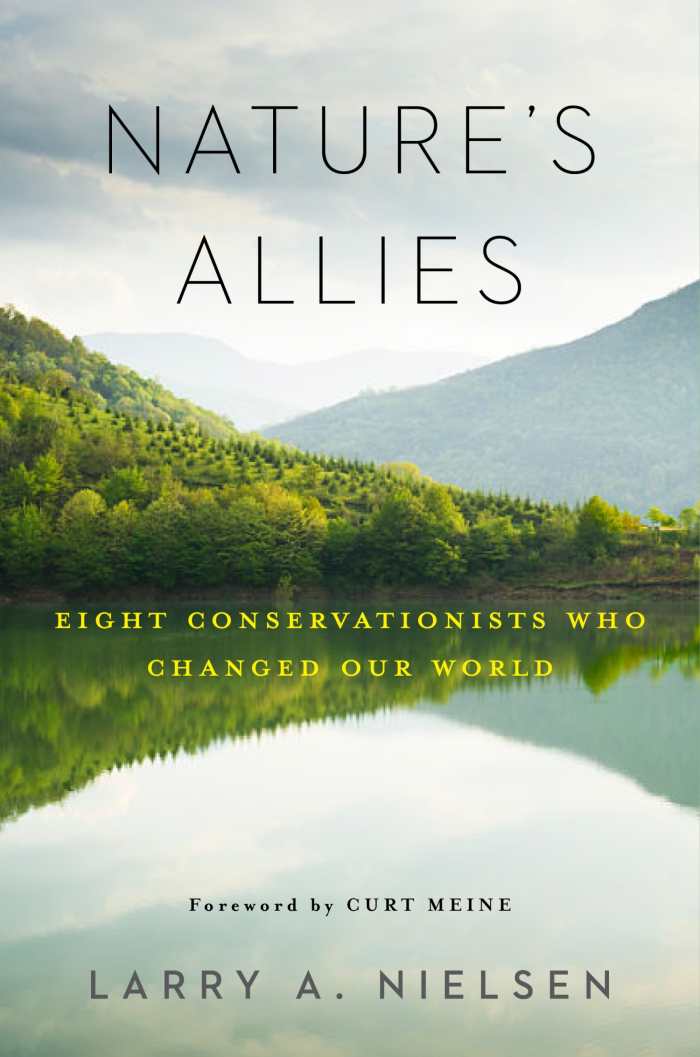
Larry Nielsen
Island Press
Hardcover $28.00 (272pp)
978-1-61091-795-7
Buy: Local Bookstore (Bookshop), Amazon
Featuring short but detailed biographies, Nature’s Allies elevates past and present icons of the environmentalist movement.
From John Muir to Wangari Muta Maati, this book covers major environmental figures roughly chronologically from the mid-1800s to the present day. In doing so, it initially focuses on the US but transitions to a wider world perspective about halfway through. The ethnic and gender diversity of the subjects is a major factor in the book’s favor. Though the largest percentage of the subjects are still white Americans, this work represents a step in the direction of correcting the erasure of non-white, non-American environmentalism from mainstream American dialogue. The message, one that Americans may not often hear, is that environmentalism is universal and global in scope. Nature’s Allies seems targeted toward Americans, specifically, and could function as a consciousness-broadening tool for activists and students who are unfamiliar with the names of Billy Frank and Chico Mendes.
The book is brief in length, and some profiles are more engaging than others. Occasionally, as in the case of John Muir, the bios nearly become odes. Even with characters who, like Aldo Leopold, might have considered themselves pragmatic people, the author goes out of his way to highlight their idealism and moral bravery. He attempts a tricky balancing act in addressing the practical concerns faced by these eight individuals while at the same time focusing on their environmental pursuits—all in under three hundred pages—and if he occasionally tips into enthusiasm or glosses over a rough patch, that may be forgivable. Regardless, the notes are thorough and include a bevy of references for follow-up.
Students would take well to Nature’s Allies, especially teenagers and college freshmen considering entry into environmental studies. It could also function well as a popular introduction to environmental heroes who aren’t necessarily household names, including Ding Darling and Gro Harlem Brundtland.
ANNA CALL (March 2, 2017)
The Permaculture Promise
What Permaculture Is and How It Can Help Us Reverse Climate Change, Build a More Resilient Future on Earth, and Revitalize Our Communities

Jono Neiger
Storey Publishing
Softcover $16.95 (160pp)
978-1-61212-427-8
Buy: Amazon
Featuring excellent photography and covering a broad range of subtopics within its genre, this book represents inspirational environmentalism at its best.
Permaculture is a practice that emphasizes not just sustainability but actual regeneration and active support of the environment. Using examples drawn from real life, with accompanying color photographs, this collection of brief essays outlines what permaculture is, how it may be practiced, and what good it does for humans and nature alike. A quick read, The Permaculture Promise covers a surprising amount of ground, from food production strategies to growing a socially healthy community.
However, it is a rough sketch at best, a philosophical outline of permaculture rather than an intensive handbook. While it does offer a few specific pieces of practical advice, such as a type of fish that thrives together with a certain species of plant or a certain cold-hardy pear variety, the book does not offer implementation strategies. The author has a way of making the projects herein sound fairly straightforward; for example, aquaculture, the practice of raising fish and vegetables symbiotically, seems simple when described as a system where fish waste and water irrigate and fertilize plants. However, practical utilization of these strategies seems likely to be fairly complex and may require consultation with professionals. This book succeeds best at presenting a bird’s-eye view of permaculture. It actively makes permaculture look beautiful, effective, and possible for the average person or community. Resources listed at the back of the book will allow those who find themselves inspired to continue their journey to permaculture.
The Permaculture Promise is a beautifully designed and highly readable book that is most likely to appeal to a younger adult audience. Activists looking for an entry point into more active sustainability practices or into eco-friendly farming, as well as farmers who are interested in engaging in permaculture, would do well to start here.
ANNA CALL (March 2, 2017)
The Sustainability Edge
How to Drive Top-Line Growth with Triple-Bottom-Line Thinking
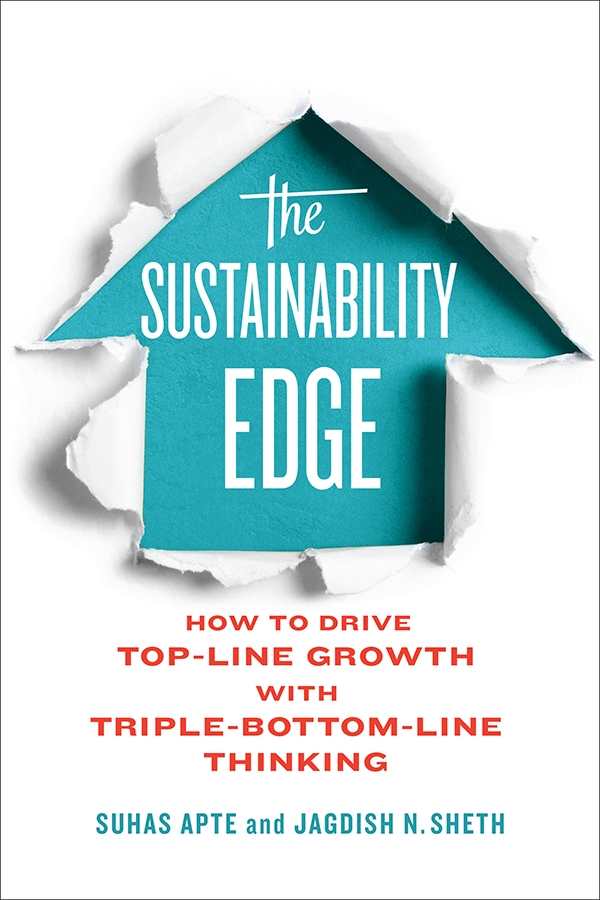
Suhas Apte
Jagdish Sheth
Rotman-UTP Publishing
Hardcover $32.95 (264pp)
978-1-4426-5068-8
Buy: Local Bookstore (Bookshop), Amazon
There are an increasing number of business sustainability handbooks on the market, but perhaps few are as complete or sophisticated as this one. Favoring a scientific approach to the problem of business sustainability, it could function as a guidebook and toolbox for businesses interested in becoming sustainable or furthering their progress down this path.
Structurally, the book focuses on nine stakeholders in a business—consumers, customers, employees, suppliers, investors, communities, government agencies, NGOs, and the media. Though thorough, the book never comes across as too detailed or sluggish. Rather, its ability to zero in on different groups, all the while emphasizing the importance of holistic cooperation to a business’s sustainability effort, makes it an excellent resource for reference. Each section features takeaways, diagrams, and an internal structure that lends itself well to notetaking. After the main body, a set of excellent back matter, including a comprehensive assessment tool, rounds out this book’s extreme usefulness.
What ties The Sustainability Edge together is its unwavering belief that businesses not only can save the world but that they are, will be, and should be doing so. For a business interested in the practicalities of the market, this is environmentalism at its best. There is no hand-wringing, no sorrow, and no sentimentality. There is only a workable problem and a set of effective, doable solutions.
While The Sustainability Edge is likely to be most effective in the hands of someone who already understands fossil-fuel consumption as a problem, it also makes excellent points insofar as the increasing desire of the global customer base to buy green. In cases where the audience for this book is ambivalent about sustainability, this approach could easily tip them into action.
ANNA CALL (March 2, 2017)
Anna Call

